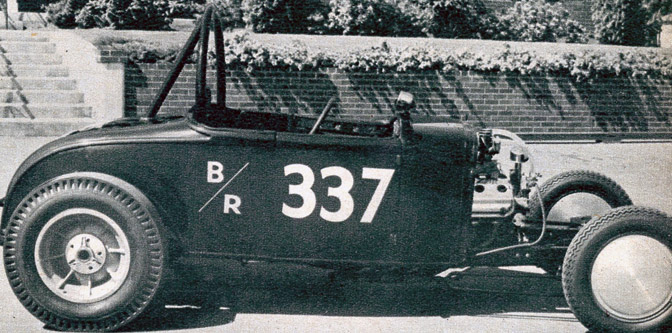Teamwork Thirty-One

Let me start off by saying I’m not a math guy. Don’t get me wrong, I worked my way through algebra, geometry and all that stuff in high school school, but I’m usually happiest when I’m dealing with words, not numbers. That being said, I’ve been crunching a lot of numbers lately and when it comes to hot rodding, I’m not liking what I’m seeing. Long story short, this hobby isn’t getting any cheaper. Per my projections, I’ll be set to start my Model A project somewhere around 2027. But today’s post isn’t supposed to be about astronomically high prices—it’s more so about what a trio of hot rodders in Portland, Oregon, did to overcome them.
Back in the late-’50s, Don Baker, Bill Arndorfer and Joe Radich wanted to build a competition machine. Rather than each assembling their own cars, the trio joined forces on a ’31 Model A. Starting with a roadster body and a set of stock rails, they stripped out pretty much everything to save weight. Away went the fenders, running boards and every stitch of upholstery. They cast off the banger and the rest of the drivetrain, although they retained the front leaf spring. The I-beam was dropped, and hairpin radius rods were put into play. Out back, they opted for a V8 quickchange stuffed with 4.86 gears.
Then there was the powerplant—the focal point of the entire operation. Deep beneath the cowl, they installed a gleaming ’51 Chrysler 354 and outfitted it with the best of the best from Isky, including the cam, pushrods and lifters. The intake was a Crower U-fab that they set up with a sextuplet of Strombergs. Even though it looked like it came right out of the AMT Parts Pack, it was good for 400hp on gas. The trans was sourced from a ’37 Cad.
From there, the rest of the car was pretty straightforward. The body was channeled four inches and an easily removable Deuce shell was perched up front. Inside, things were spartan with a single bucket seat, aluminum firewall, Bell steering wheel and a few gauges. A single hoop rollbar and a military surplus lap belt provided necessary protection.
The paintwork is perfect for the era: just the B/Roadster classification, the racing number and—most importantly—their club name on the decklid. This car’s charm is in its simplicity, but was it affordable? That’s for you to decide. According to the August 1960 issue of HRM, the total build cost was $1,000 for each of the three owners—just over $8,500 in today’s dollars. Not cheap, but hey, at least they divided the cost!
—Joey Ukrop
Photos by Pete Sukalac, HRM, August 1960








